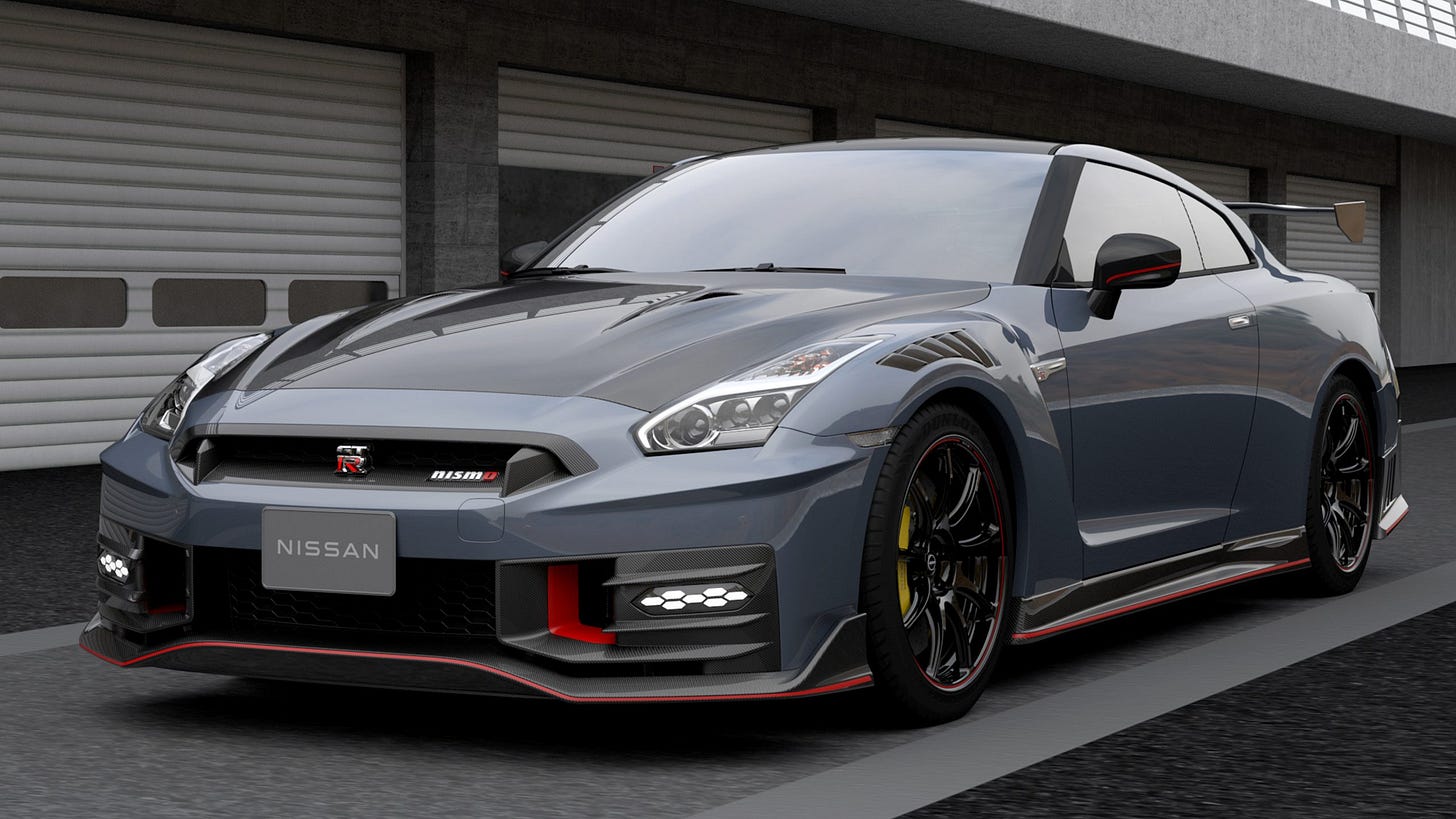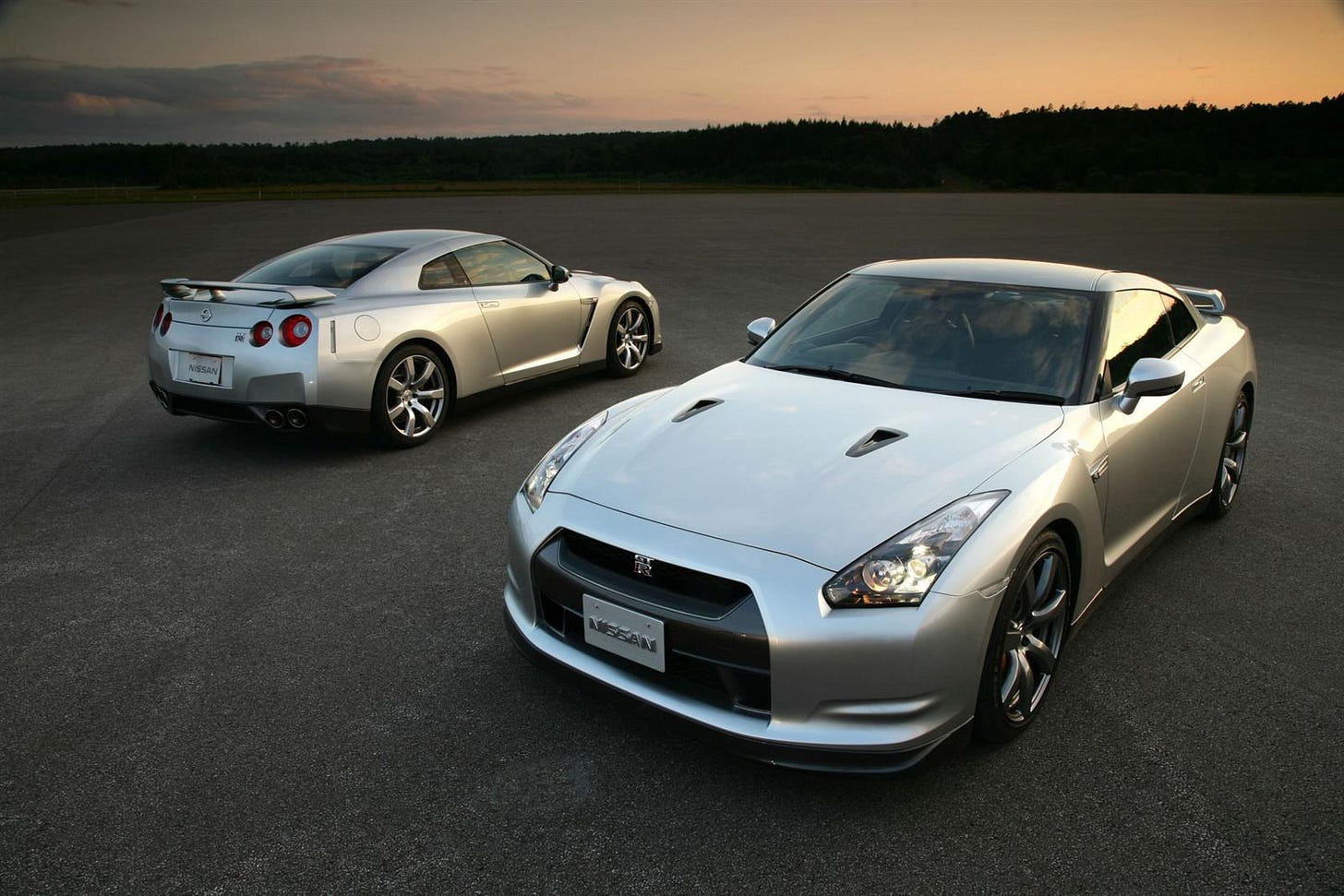Unpopular Carpinions: Just Because The Nissan GT-R Is Old Doesn't Mean It's Not Cool Anymore
Getting older doesn’t mean a thing isn’t worthy of love anymore. Jay Leno is getting up there in age, and he’s still as cool as ever, is he not? Same with Randy Pobst or Keiichi Tsuchiya, still kicking ass on the road and the track. So why can’t we have the same attitude towards cars?
That said, the R35-generation Nissan GT-R is apparently old enough to get a driver’s license, a period worth many lifetimes in car years. To put that in perspective, it stuck around long enough to witness three generations of Ford Mustang, Chevy Corvette, and Porsche 911. Hell, it’s been around the block enough times to watch me fail both fourth-grade math and college algebra before its most recent facelift.
But should we really be angry about it? Time is merely a construct, and, in my eyes, the R35 Nissan GT-R has become timeless – sort of.
Okay, okay, you tireless hounds. Yes, the GT-R is old, period. And it’d be careless to shower any praise without addressing how Father Time did Godzilla dirty, or rather how Father Time blessed its peers while Nissan’s halo car stagnates by comparison. As David Patterson (ThatDudeInBlue) puts it in what seems to be the most centrist and balanced view on the internet, the nonexistent R36 is the Grand Theft Auto VI of cars.
The GT-R always got faster, evident in the massive leap taken for the 2012 facelift and subsequent Nismo and Track Edition models. Power rose from 480 horsepower to 485, 530, 545, and now 565 ponies. And to keep pace with the times, Nissan did appreciably update exterior and interior styling, with sharper angles here and new wheel designs there. But the GT-R fails to remain totally competitive in a world that’s leaving it behind.
Audi R8s and 911 Turbos that the R35 once toppled now eclipse the power numbers that helped make the VR38 engine legendary. And while the current crop of Nismo models pushes a still-outstanding 600 horsepower, the 700 and 800-horsepower figures of the latest supercars will surely win their owners a round of bar stool drag racing.
Perhaps the GT-R still takes the cake on the circuit, but time walked past the R35 in that regard too. For example, you would’ve laughed your ass off to hear that a stock Mustang could drive the wheels off Godzilla in 2009. Yet, in 2016 for Motor Trend’s annual Best Driver’s Car comparison, a Shelby GT350R lapped Laguna Seca with a time of 1:36.11, blitzing the 2012 GT-R they previously lapped by 0.24 seconds. And the Shelby did so with rear-wheel drive, less power and torque, and a manual gearbox. A few years later, a non-R GT350 would come hot on the GT-R’s heels with a 1.36.83, a time it set chasing the 992-generation 911’s time of 1:35.52.
Both pony cars and the Porsche were no match for the 2017 GT-R Nismo, with which Motor Trend had set a 1:35.11 lap time. However, this leaves you with the elephant in the paddock: shaving a few tenths off for tens of thousands of dollars more. This then leads to the entire GT-R lineup’s glaring Achilles’ heel as it enters the 2024 model year.
A brand-new Nissan GT-R is a piss-poor value.
If pricing is anything like the 2023 GT-R, the 2024 model should ring in at under $115,000, with the full-blown Nismo soaring into the low $200,000 range. Not bad in a world where fellow ten-second supercars are starting to crest $300,000, but look at the lower-rung underdogs that have become genuine threats to the GT-R.
Ford has proven that a well-sorted Mustang can keep pace with one around a track for half the price and double the driver involvement. And the C8 Corvette has transcended its comparatively humble price tag to trade blows with Ferraris as the Z06 and newly-released E-Ray hybrid steal headlines, with the former Vette proving capable of matching the GT-R in the straights. Mildly-optioned 911 Carreras and 718 GT4s also loiter within the GT-R’s price bracket.
As time continues to march forward while Nissan stubbornly digs its heels in, you can’t help but wonder who the GT-R is meant for or what purpose it serves. Well, I think that part is simple.
The Nissan GT-R is an overdose of old-timey fun for those clamoring for some much-needed nostalgia.
Ironic, isn’t it? What was once panned as overly digitized and soulless is now being praised as somewhat analog, a reminder of what proper driver’s cars used to be in many ways.
Automobile Magazine proclaimed Godzilla as still deserving of a kingdom during their track test of a 2020 Nismo. And as Car And Driver senior editor, Ezra Dyer, stated in a 2021 column, the GT-R is “– a showcase for traits we wish hadn’t been bred out of existence.”
Fans continue to cite jaw-dropping performance as a major key factor to the GT-R’s unwavering reputation and the use of things that are slowly becoming extinct in supercars, such as a manual hand brake, the lack of hybridization, and hydraulic steering. The latter especially draws many compliments from today’s crop of journalists.
“I didn’t appreciate the GT-R’s steering when I first drove the car, in 2008, because back then lively steering feel was common and expected, if perhaps on the wane,” Dyer stated in his column. “Now it’s a revelation.”
The VR38 twin-turbo V6 remains an honest and willing powertrain, if gruff and relatively unexotic. The engine howls as drivetrain components whine in ways unheard of in roadgoing sports cars today. Sure, the 5.5-liter LT5 is the American rebirth of free-breathing Ferrari V8s, but it’s not a beacon of the Gran Turismo hype train like the GT-R motor, which is a powerhouse out of the box and even more when you take advantage of its near-limitless aftermarket support.
“You can feel the driveline, you can hear the transmission, and the steering is so well connected,” exclaims pro racer and Automobile Magazine test driver, Andy Pilgrim, regarding a 2020 Nismo. “This is such a special vehicle.”
Whether you love it or hate it, the styling carries a presence that holds a candle to its far more voluptuous rivals, from its sharp profile to the unmistakable afterburner taillamps. The GT-R retains a certain badass factor to it, down to the Digital Polyphony-designed digital gauges, a flex in 2009 that has now become a nod to the era in which it was born.
See a running theme here? Technology that was wildly advanced back then (and still is in some ways) is now “of the time,” and performance enhancers that were once considered cheating are suddenly honest and endearing. So time walks past the GT-R and does so for both bad and good.
And come on. A T-Spec in Millenium Jade or Midnight Purple? Tell me that doesn’t have even the slightest hint of curb appeal. I dare you.
So yes. The Nissan GT-R is old. We know. Everyone from the Modern Warfare 2 kids to the Fortnite kids knows. But the Nissan GT-R is still cool. No matter the competition, it’s a car that you can’t help but smile at, just a little bit, and one regarded as one of those cars where you must snatch the keys and never let go. We shouldn’t be so dismissive that it’s still around but rather respect that Nissan is still trying, albeit playing it safe and conservative.
Could I justify buying one new today? I’m not sure. Probably not. But I can still love and respect it for what it is, and I’m sure that’s all the GT-R wants for as few as Nissan sells nowadays. So as long as the GT-R continues to turn heads and tear up backroads, it doesn’t deserve to be put in Park at the nursing home just yet.






